$0.00
No products in the cart.
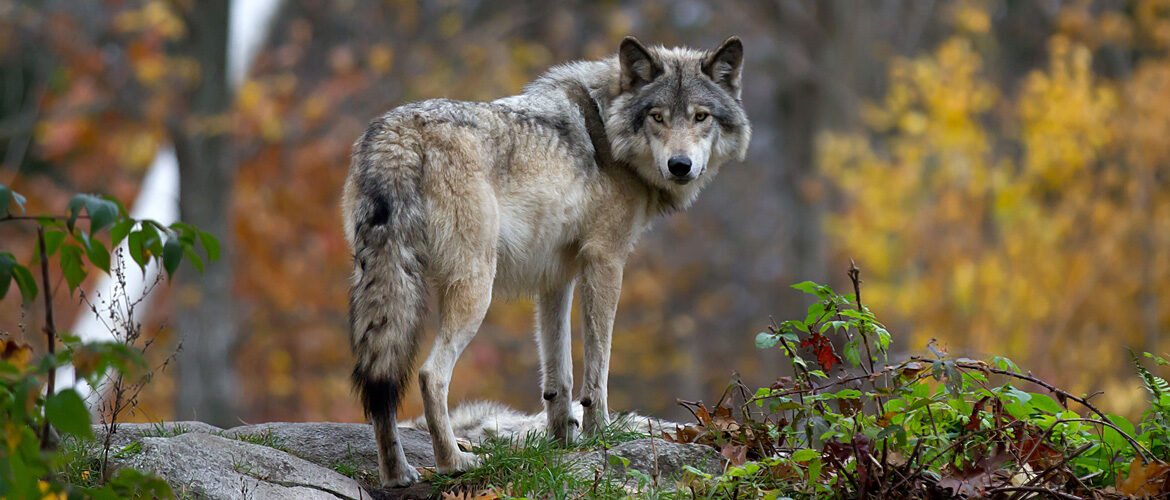
Wolves have long been a subject of fascination and symbolism for humans. These iconic predators are found across North America and have played an important role in shaping ecosystems and human culture for thousands of years. The wolf also to be known as the grey wolf, is a large canine native to Eurasia and North America. More than thirty subspecies of Canis lupus have been recognized, including the dog, though grey wolves, as popularly understood, only comprise wild subspecies.
The English word “wolf” stems from the Old English wulf, which is itself thought to be derived from the Proto-Germanic wulfaz. In 1758, the Swedish botanist and zoologist Carl Linnaeus published in his Systema Naturae the binomial nomenclature with the basis of Canis in the Latin word meaning “dog” (Tedford, Richard H.; Wang, Xiaoming; Taylor, Beryl E. (2009)), and under this genus he listed the doglike carnivores including domestic dogs, wolves, and jackals. He classified the domestic dog as Canis familiaris, and the wolf as Canis lupus. Linnaeus considered the dog to be a separate species from the wolf because of its “cauda recurvata” (upturning tail) which is not found in any other canid (Boitani, L.; Phillips, M.; Jhala, Y. (2018)).
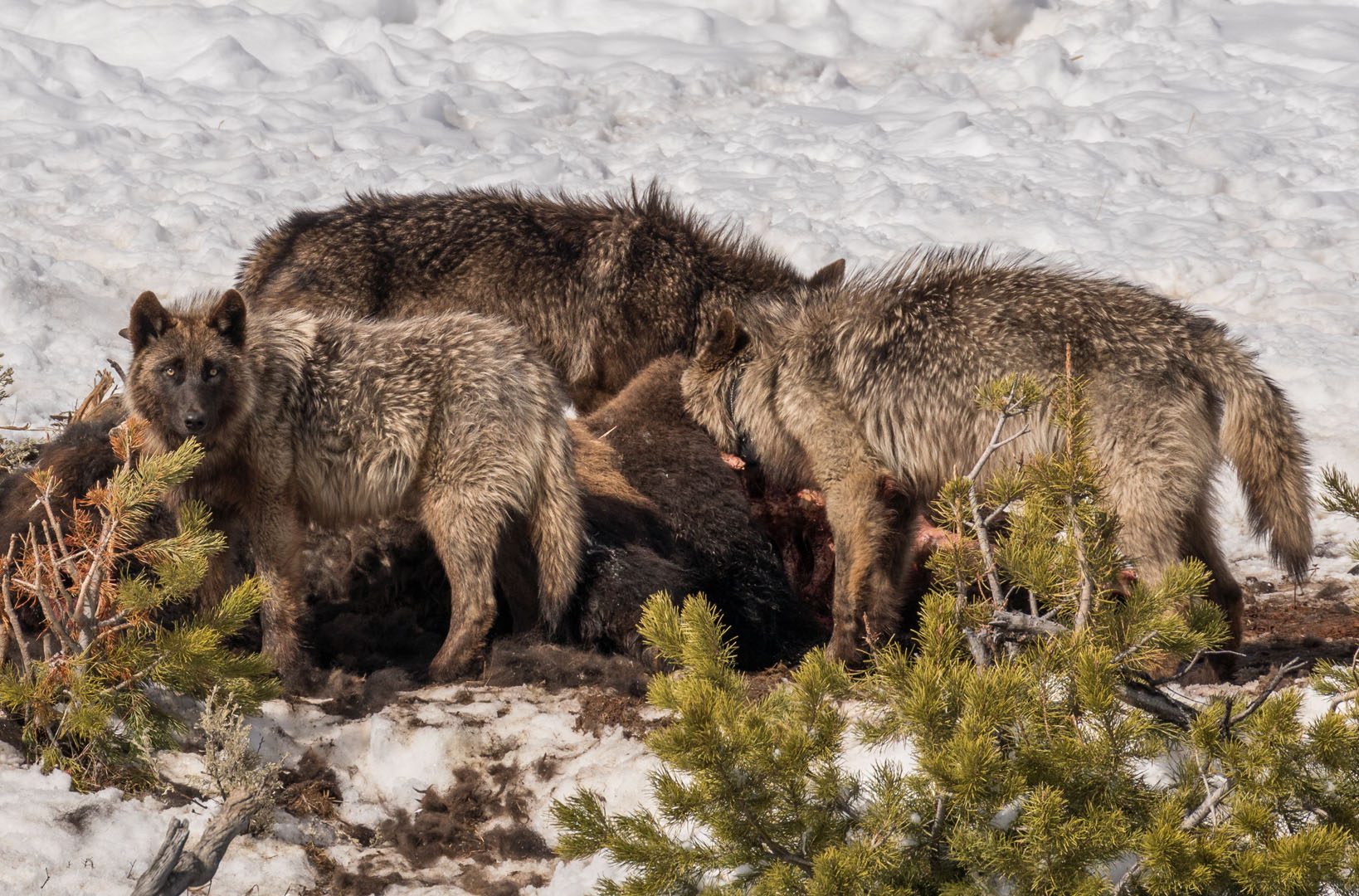
In the third edition of Mammal Species of the World published in 2005, the mammologist W. Christopher Wozencraft listed under C. lupus 36 wild subspecies, and proposed two additional subspecies: familiaris (Linnaeus, 1758) and dingo (Meyer, 1793). Wozencraft included hallstromi—the New Guinea singing dog—as a taxonomic synonym for the dingo. Wozencraft referred to a 1999 mitochondrial DNA (mtDNA) study as one of the guides in forming his decision, and listed the 38 subspecies of C. lupus under the biological common name of “wolf”, the nominate subspecies being the Eurasian wolf (C. l. lupus) based on the type specimen that Linnaeus studied in Sweden (Clutton-Brock, Juliet (1995)).
In 2020, a literature review of canid domestication stated that modern dogs were not descended from the same Canis lineage as modern wolves, and proposed that dogs may be descended from a Pleistocene wolf closer in size to a village dog. In 2021, the American Society of Mammalogists also considered dingos a feral dog (Canis familiaris) population.
There are 38 subspecies of Canis lupus listed in the taxonomic authority Mammal Species of the World (2005, 3rd edition). These subspecies were named over the past 250 years, and since their naming, several them have gone extinct.
Of the listed subspecies in Eurasia, Sokolov and Rossolimo (1985) recognised nine Old World subspecies of wolf. For North America, in 1944 the zoologist Edward Goldman recognized as many as 23 subspecies based on morphology. However, in 1970, L. David Mech proposed that there was “probably far too many subspecific designations…in use”, as most did not exhibit enough points of differentiation to be classified as separate subspecies of this number of wolves, some 15 listed subspecies are listed as now extinct according to fossil records.
In 1999, a study of mitochondrial DNA indicated that the domestic dog may have originated from multiple wolf populations, with the dingo and New Guinea singing dog “breeds” having developed at a time when human populations were more isolated from each other (A. Lehrman (1987)). In the third edition of Mammal Species of the World published in 2005, the mammologist W. Christopher Wozencraft listed under the wolf Canis lupus some 36 wild subspecies, and proposed two additional subspecies: familiaris Linnaeus, 1758 and dingo Meyer, 1793.
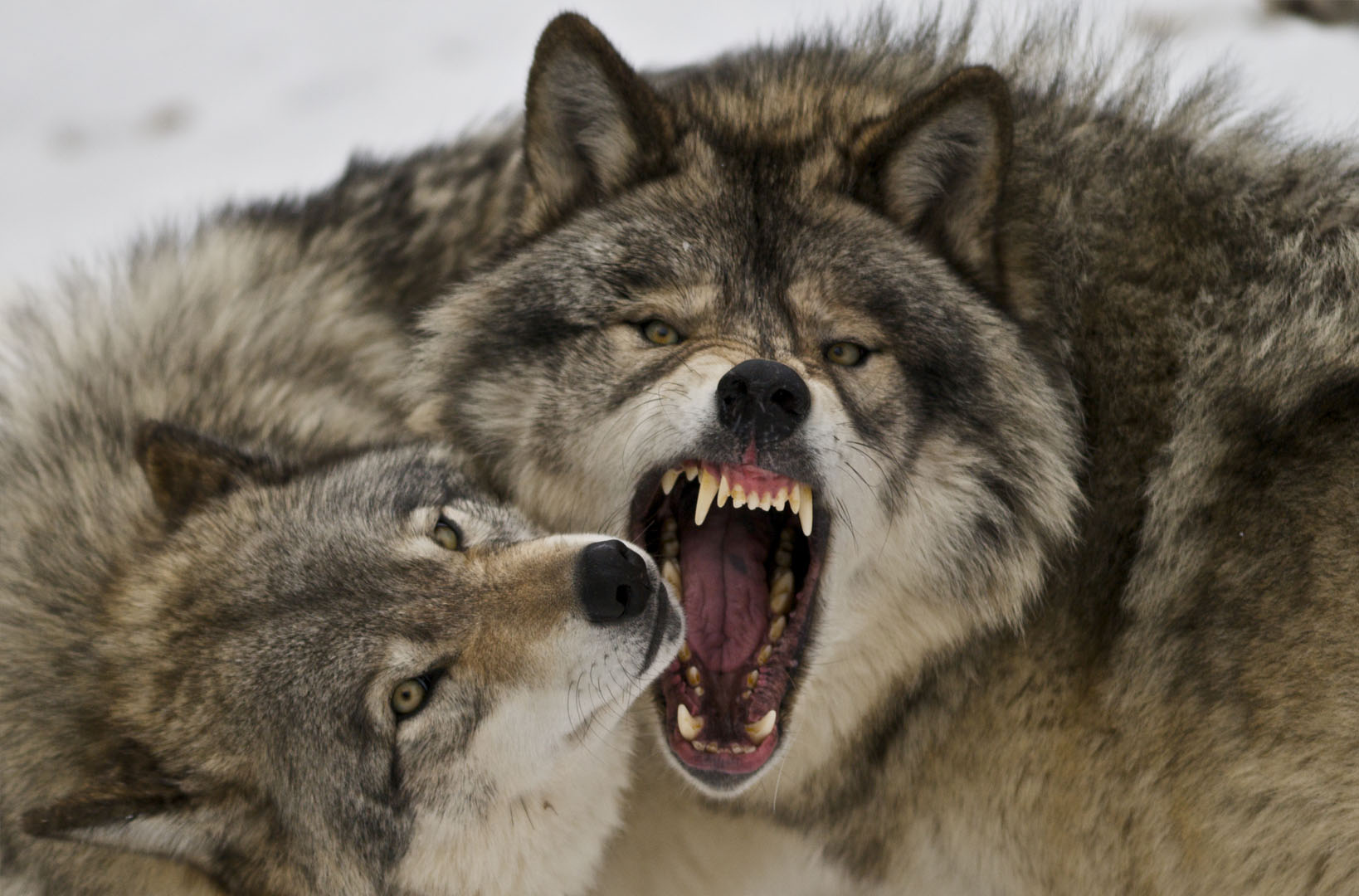
The size of wolves varies, as does reports associated with sightings. Data available reports that adult wolves measure 105 – 160 centimetres in length and 80 – 85 centimetres at shoulder height. The tail measures between 29 – 50 centimetres in length and the ears of the wolf 9 – 11 centimetres in height (Heptner, V. G.; Naumov, N. P. (1998)). The size and weight of the modern wolf increases proportionally with latitude in accord with Bergmann’s rule (Miklosi, A. (2015)). The mean body mass of the wolf is 40 kilograms, the smallest specimen recorded at 12 kilograms and the largest at 79.4 kilograms (175 lb) (Miklosi, A. (2015)).
On average, European wolves weigh 38.5 kilograms, North American wolves 36 kilograms, and Indian and Arabian wolves 25 kilograms. Females in any given wolf population typically weigh 2.3–4.5 kilograms less than males. Wolves weighing over 54 kilograms are typically uncommon, though exceptionally large individuals have been recorded in Alaska and Canada. In central Russia, exceptionally large males have been also noted as able to reach a weight of between 69 – 79 kilograms. Wolves are monogamous, mated pairs usually remaining together for life. Should one of the pair die, another mate is found quickly (Mech & Boitani 2003). Wolves become mature at the age of two years old and sexually mature from the age of three years old. The age that wolves will breed depends largely on environmental factors; when food is plentiful, or when wolf populations are heavily managed, wolves can rear pups at younger ages to better exploit abundant resources. Females are capable of producing pups every year, one litter annually being the average (Heptner & Naumov 1998). Oestrus typically begins in the second half of winter and lasts for two weeks.
Young females will give birth to four to five young, and older females from six to eight young and up to fourteen. Their mortality rate is generally 60–80% (Mech & Boitani 2003). Newborn wolf pups look similar to German Shepherd Dog pups and they are born blind and deaf and are covered in short soft greyish-brown fur weighing between 300–500 grams.
Pups are born in early spring after a gestation period of between 62 and 75 days, and are cared for by the entire pack. They depend on their mother’s milk for the first month, and then they are gradually weaned and fed regurgitated meat by other pack members. By 7 to 8 months of age, when almost fully grown, the pups begin traveling with the adults. Offspring may leave to form their own packs on the onset of sexual maturity and in response to competition for food within the pack.
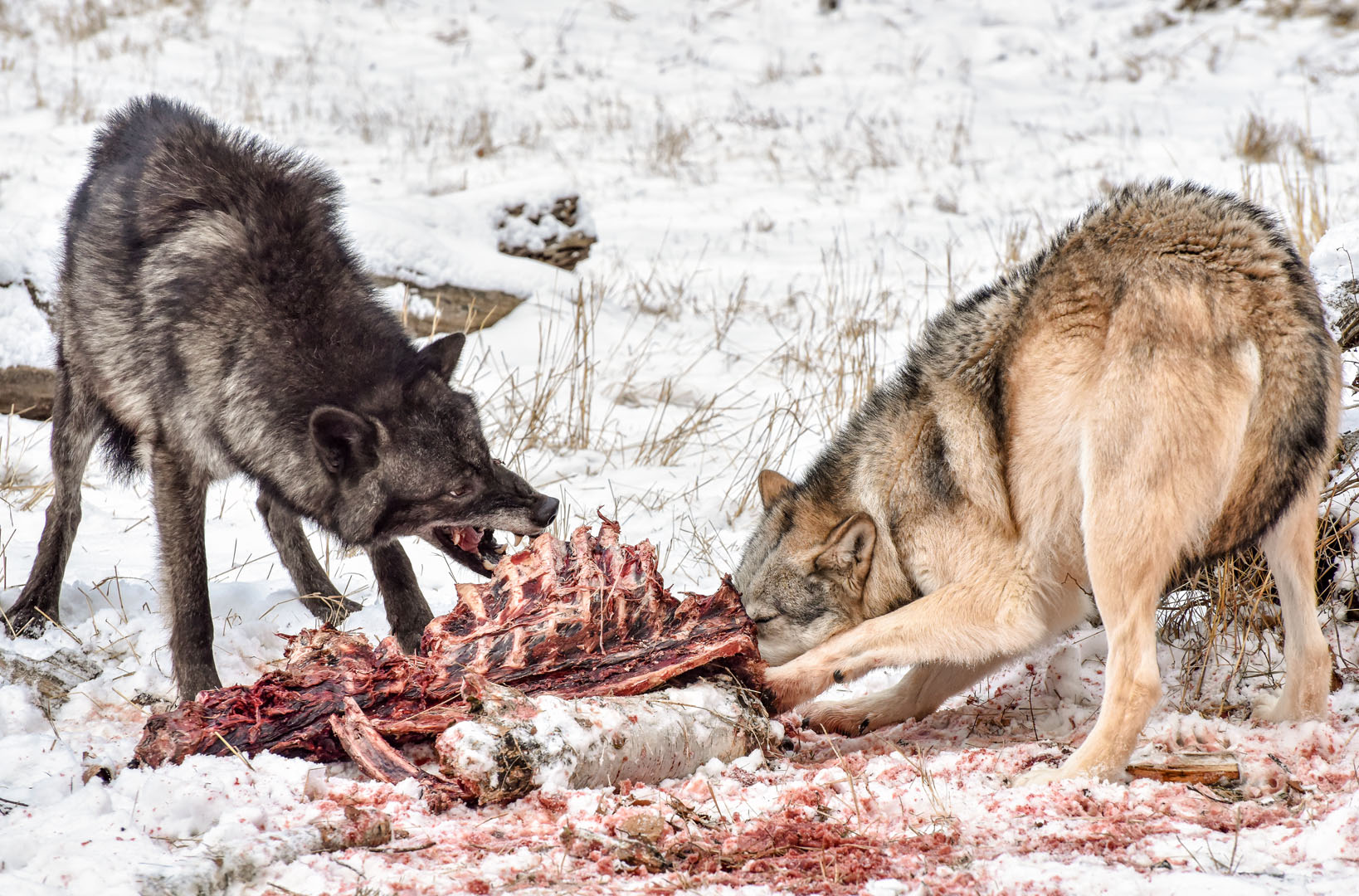
The wolf has very dense and fluffy winter fur, with a short undercoat and long, coarse guard hairs (Heptner & Naumov 1998). Most of the undercoat and some guard hairs are shed in spring and grow back in autumn. The longest hairs occur on the back, particularly on the front quarters and neck. Especially long hairs grow on the shoulders and almost form a crest on the upper part of the neck. The hairs on the cheeks are elongated and form tufts. The ears are covered in short hairs and project from the fur. Short, elastic and closely adjacent hairs are present on the limbs from the elbows down to the calcaneal tendons. The winter fur is highly resistant to the cold as is evident by the fact wolves in northern climates can rest comfortably in open areas at −40 Celsius.
A wolf’s coat colour is determined by its guard hairs. Wolves usually have some hairs that are white, brown, grey and black. The coat of the Eurasian wolf is a mixture of ochreous (yellow to orange) and rusty ochreous (orange/red/brown) colours with light grey however many colour variations exist from black, grey through to white.
In North America, the coat colours of wolves follow Gloger’s rule, wolves in the Canadian arctic being white and those in southern Canada, the U.S., and Mexico being predominantly grey. In some areas of the Rocky Mountains of Alberta and British Columbia, the coat colour is predominantly black, some being blue-grey and some with silver and black. Differences in coat colour between sexes is absent in Eurasia; females tend to have redder tones in North America. Black-coloured wolves in North America acquired their colour from wolf-dog admixture after the first arrival of dogs across the Bering Strait 12,000 to 14,000 years ago (“Molecular and Evolutionary History of Melanism in North American Grey Wolves”). Wolves communicate using vocalizations, body postures, scent, touch, and taste. The phases of the moon have no effect on wolf vocalization, and despite popular belief, wolves do not howl at the moon (Busch 2007).
Of all members of the genus Canis, the wolf is most specialized for cooperative game hunting as demonstrated by its physical adaptations to tackling large prey, its more social nature, and its highly advanced expressive behaviour, including individual or group howling. It travels in nuclear families consisting of a mated pair accompanied by their offspring. Opportunistic hunting is conducted initially as a spot and stalk on prey identified as being weak or of least resistance. When within range, the pack will typically execute a running chase biting and latching onto the animal until exhaustion or blood loss occurs. Although typically successful, this style of hunting can be dangerous for the wolf.
The global wild wolf population was estimated to be 300,000 in 2003 and is considered to be of Least Concern by the International Union for Conservation of Nature (IUCN). Recently, great efforts have been undertaken to conduct reintroduction across the United States which has been the subject of great controversy. With reintroductions considered in areas where native wolves have been extirpated and where certain prey species is supposed to be in abundance to support a wolf population.
Reintroductions, to date, have occurred in Arizona, the Northern Rocky Mountains (Yellowstone National park and Idaho) and further plans to introduce them back into Colorado.
In Arizona, the five last known wild Mexican grey wolves were captured in 1980 in an agreement between the United States and Mexico intended to save the critically endangered subspecies. Between 1982 and 1998, a captive-breeding program brought these wolves back from the brink of extinction where over 300 captive Mexican wolves were part of the recovery program (Montoya Bryan, Susan (March 12, 2021)). In March 1998, this reintroduction campaign began with the releasing of three packs into the Apache-Sitgreaves National Forest in Arizona, and 11 wolves into the Blue Range Wilderness Area of New Mexico (“Mexican Gray Wolf Recovery Program”).
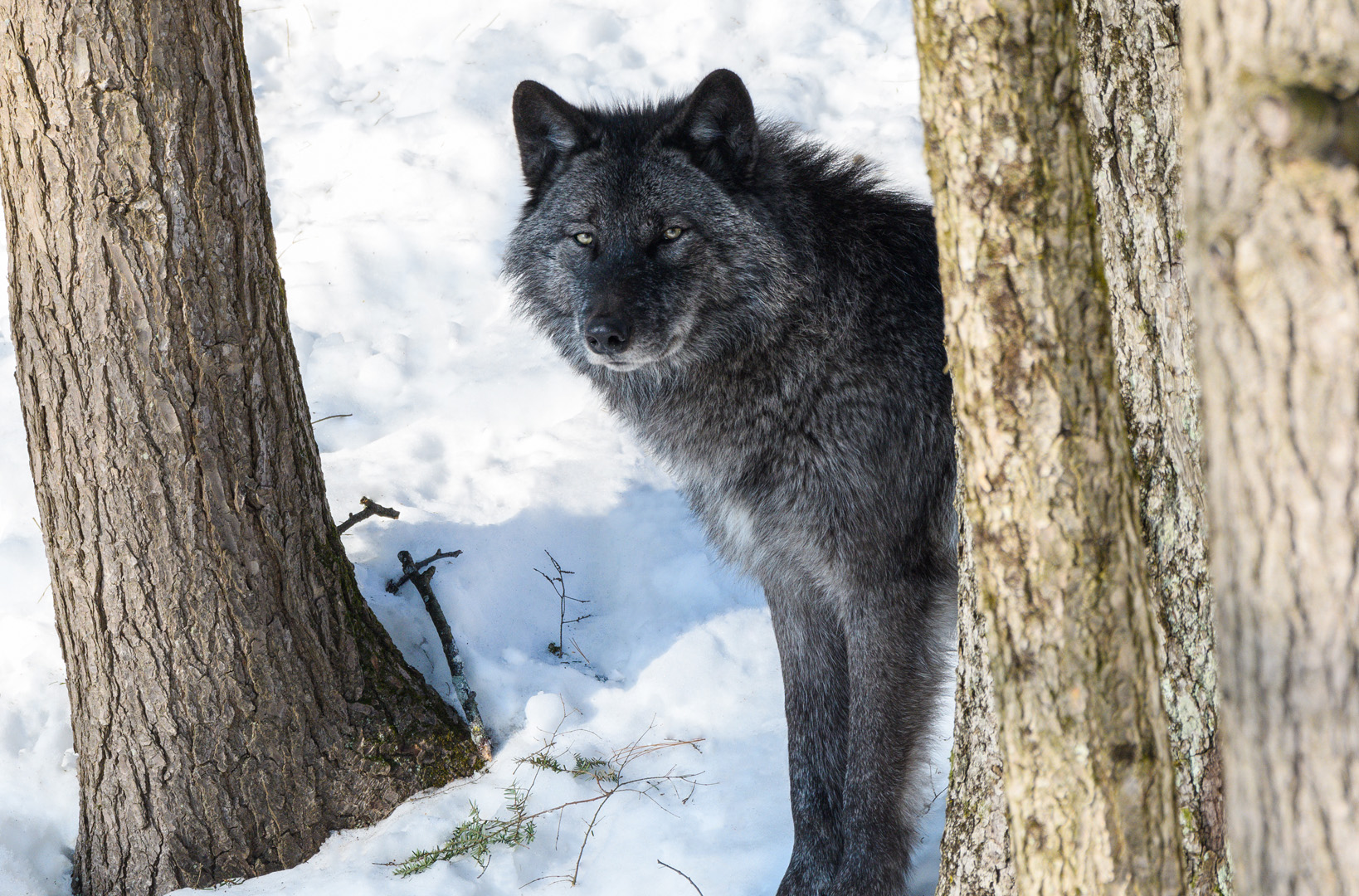
The Northern Rocky Mountain wolves were reintroduced to Yellowstone National Park, where in 1926 the last wolves were officially killed within Yellowstone’s boundaries. As well as these reintroductions, further were introduced into Idaho starting in 1995. These wolves were considered as “experimental, nonessential” populations per article 10(j) of the Endangered Species Act (ESA). These wolves were adolescent animals from packs of Mackenzie Valley wolves in Alberta, Canada.
Wolves occur across Eurasia and North America. However, deliberate human persecution because of livestock predation and fear of attacks on humans has reduced the wolf’s range to about one-third of its historic range; the wolf is now extirpated (locally extinct) from much of its range in Western Europe, the United States and Mexico, and completely in Ireland, the United Kingdom, and Japan. In modern times, the wolf occurs mostly in wilderness and remote areas. The wolf can be found between sea level and 3,000 m (9,800 ft). Wolves live in forests, inland wetlands, shrublands, grasslands (including Arctic tundra), pastures, deserts, and rocky peaks on mountains. Habitat use by wolves depends on the abundance of prey, snow conditions, livestock densities, road densities, human presence and topography.
The wolf is an interesting participant in the landscape where it occurs, for instance, wolves typically dominate other canid species in areas where they both occur. In North America, incidents of wolves killing coyotes are common, particularly in winter, when coyotes feed on wolf kills. Wolves may attack coyote den sites, digging out and killing their pups, though rarely eating them. There are no records of coyotes killing wolves, though coyotes may chase wolves if they outnumber them (Merrit, Dixon (January 7, 1921). “World’s Greatest Animal Dead”) Interactions have been observed in Eurasia between wolves and golden jackals, the latter’s numbers being comparatively small in areas with high wolf densities. Wolves will kill red, Arctic and corsac foxes, usually in disputes over carcasses, sometimes eating them as well (Heptner & Naumov 1998).
Where they coinhabit landscapes, brown bears typically dominate wolf packs in disputes over carcasses, while wolf packs mostly prevail against bears when defending their den sites. Both species kill each other’s young. Wolves eat the brown bears they kill, while brown bears seem to eat only young wolves. Wolves have been recorded on numerous occasions actively seeking out (American) black bears in their dens and killing them without eating them. Unlike brown bears, black bears frequently lose against wolves in disputes over kills (Mech & Boitani 2003).
In Israel, Palestine, Central Asia and India wolves may encounter striped hyenas, usually in disputes over carcasses. Striped hyenas feed extensively on wolf-killed carcasses in areas where the two species interact. One-to-one, hyenas dominate wolves, and may prey on them but wolf packs can drive off single or outnumbered hyenas (Mills, M. G. L.; Mills, Gus; Hofer, Heribert (1998)). There is at least one case in Israel of a hyena associating and cooperating with a wolf pack. It is proposed that the hyena could benefit from the wolves’ superior ability to hunt large, agile prey. The wolves could benefit from the hyena’s superior sense of smell, to locate and dig out tortoises, to crack open large bones, and to tear open discarded food containers like tin cans (Mech & Boitani 2003).
Wolves were once an important part of the culture and mythology of many Native tribes. According to the National Park Service, wolves were revered for their intelligence, strength, and loyalty, and were often seen as spiritual guides and protectors. Some tribes even performed wolf dances to honour the animals and to ask for their blessings in hunting and warfare.
Many examples of wolf deities appear across multiple cultures over very long periods of time. For instance, in Norse Mythology, the wolf Fenrir was a symbol of chaos who eventually swallows Odin whole. However, the wolf was also associated with warriors, and Odin had two wolves as loyal companions. The Morrighan, an ancient Irish (Celtic) goddess of life and death, wisdom, magic, shapeshifting, and war and one of the Celtic wolf goddesses. Further examples are found in the story of Lycaon, also known as Arcadia, a mythological king of Arcadia. There were many Greek myths surrounding Lycaon’s life, but the most popular tells of Zeus turning Lycaon into a wolf after Lycaon tried to trick Zeus. The wolf is revered in Mongolia. Chinggis Khaan (better known to the Western world as Genghis Khan) was descended from the union of a wolf and an elk, and the wolf is a potent symbol of Mongolian identity and nationhood. Wolves are Heaven’s Dogs, emissaries of Tenger, the Sky, and bearers of Tenger’s will.
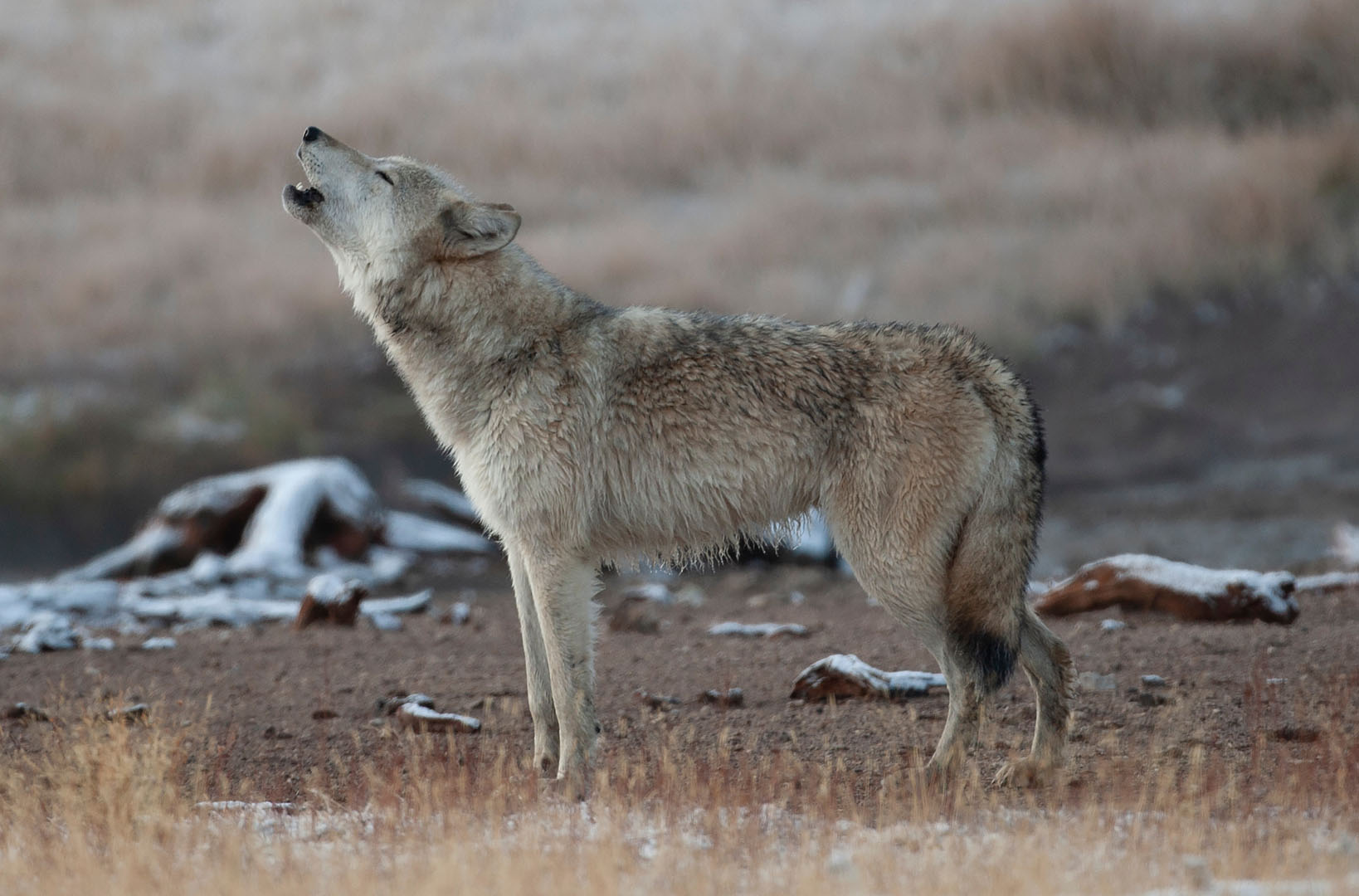
The story of how St. Francis of Assisi tamed the Wolf of Gubbio is one of the great legends linked with the life of a saint, as the story goes, during his visit to Gubbio, St. Francis goes out to meet the wolf. when the wolf sees St. Francis, he comes charging at the saint with his mouth open, ready to attack. St. Francis immediately makes the sign of the cross over him and says, “Come here, Brother Wolf. I command you on behalf of Christ that you do no harm to me or to anyone.” As soon as St. Francis did this, notes The Little Flowers, “the fearsome wolf closed his mouth and stopped running; and once the command was given, it came meekly as a lamb, and threw itself at the feet of St. Francis.” (Web source franciscanmedia.org).
Until rather recent times, and currently for some, the werewolf plays an important role in Mythology which includes the wolf. The werewolf being of a super human, typically bipedal creature originating from a human and taking the form of a vicious sort of hybrid wolf.
Werewolves made their early appearance in Greek mythology with the Legend of Lycaon. According to the legend, Lycaon, the son of Pelasgus, angered the god Zeus when he served him a meal made from the remains of a sacrificed boy. As punishment, the enraged Zeus turned Lycaon and his sons into wolves.
Further hybrid type creatures appear throughout history, for instance, the Goddess Lupa is a she-wolf. She is the protective mother who fed Romulus and Remus (twin demi-gods and the founders of Rome) at her teat. As the narrative tends to unfold, she is noted as being formidable and can bring death to her enemies or protection to those she cares about.
Interestingly, the wolf, or more accurately animals played an important role in Religion. In Dan Flores “Coyote America, A Natural and Supernatural history”, he lays the foundations of human history in the evolution of Religion. Typically practiced by Ancient peoples, Animal worship (or zoolatry) is an umbrella term designating religious or ritual practices involving animals, which included wolves. At some point in time, this evolved into deities taking a more human form, nevertheless, Dan cites a four percent separation in the coyote, jackal and the wolf having departed evolutionary some six to a hundred and sixteen thousand years ago. While four percent might seem insignificant, Dan goes on to suggest that this is around the same number that differentiates humans from apes.
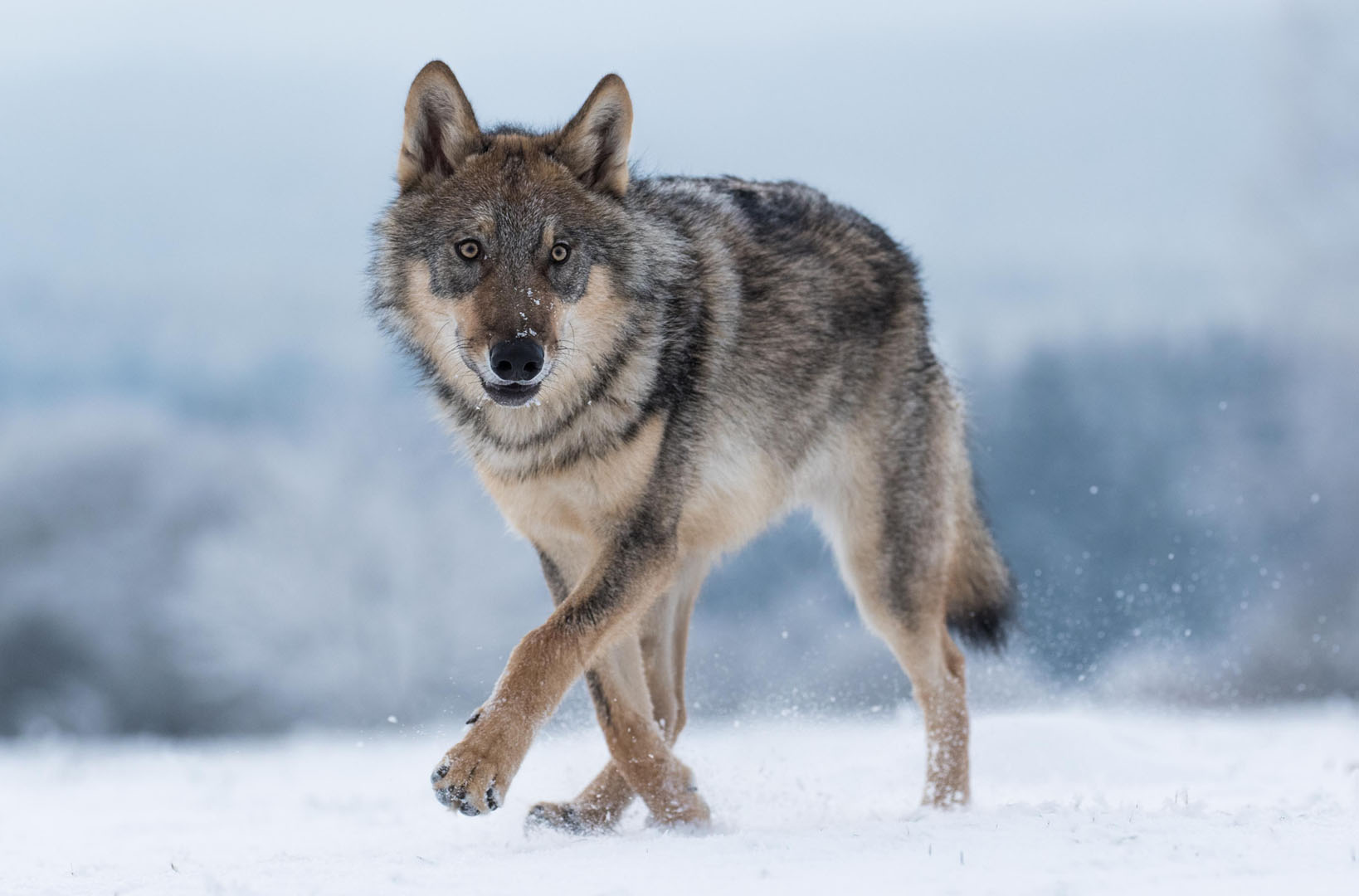
Other most iconic wolf populations in North America is the grey wolf, which can be found across much of the continent. These wolves are known for their distinctive howls and are an important predator in many ecosystems. Unfortunately, the relationship between humans and wolves has not always been peaceful. The introduction of European settlers and their livestock led to a decline in wolf populations, as wolves were seen as a threat to both livestock and human safety and so, in some cases, wolves were hunted and killed in large numbers, even under government initiative. Grey wolves were once common throughout much of North America, but were nearly exterminated in the lower 48 states in the 20th century through a complex human waged poisoning war against them, when that succeeded, humans unsuccessfully turned to the “prairie wolf” as described by Lewis and Clarke, the coyote. In relatively recent times, conservation efforts have helped to bring wolves back from the brink of extinction in some areas and continue to actively manage healthy populations elsewhere with minimal threat to their populations.
Wolves have a long history of interactions with humans including hunting, having been despised and hunted in most pastoral communities because of their attacks on livestock, while conversely being respected in some agrarian and hunter-gatherer societies. Today, hunting for wolves varies, as does success. Hunting bait piles in winter appears to be highly selective and can prove successful where a pack is actively working an area. Alternately, opportunistic harvest on a tag only basis as an add on to a big game hunt can add a fantastic element to the trip should the opportunity arise. Lastly, harvest of wolves by trapline is still possible however pursuit for wolves in this method is typically for fur harvest occurring in winter which requires the time and skill of a dedicated trapper.